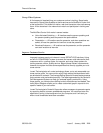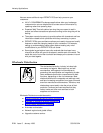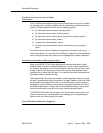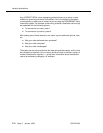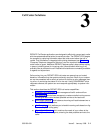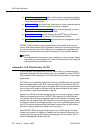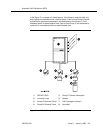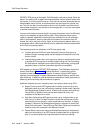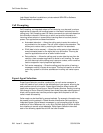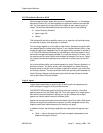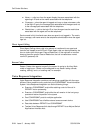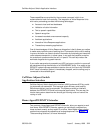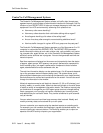
Call Vectoring
Issue 5 January 1998
3-5555-230-024
■ Dialed-Number Identification Service allows agents to identify (via display
telephones) the purpose of each incoming call and greet the caller appro-
priately.
■ Automatic Available hunt group allows CONVERSANT Voice Information
System or other “nonhuman” agent positions to be automatically staffed
and made available.
■ Each agent can be logged into as many as four hunt groups at a time.
■ Malicious Call Trace allows you to designate stations that can trace emer-
gency or threatening calls. When an agent receives a malicious call, the
agent presses the Malicious Call Trace button. The system gathers trace
information and connects a voice recorder to the call. All equipment used
to complete the call is held up (the call cannot be disconnected) until the
feature is deactivated.
■ Redirection on No Answer allows an unanswered, ringing call to be redi-
rected to an ACD queue or to a Vector Directory Number (see below) after
an administered interval. The agent position will also be taken out of ser-
vice.
■ VuStats provides agents and supervisors with call management informa-
tion on their telephone displays. This customized information can include
how many calls an agent has taken and how many agents are on break,
for example.
■ Station Hunting allows calls to be routed first to the called extension, then
according to a linear, circular, or modified circular sequence of extensions.
The circular sequences work to distribute calls equitably, ensuring that
there are no overworked “first” extensions in a hunt group.
Call Vectoring
Call Vectoring is a versatile method of routing incoming calls that can be com-
bined with Automatic Call Distribution for maximum benefit and call center effi-
ciency. A call vector is a series of call-processing steps (such as providing
ringing tones, busy tones, music, announcements, and queuing the call to an
Automatic Call Distribution hunt group) that define how calls are handled and
routed. The steps, called vector commands, determine the type of processing
that specific calls will receive.
Vector commands may direct calls to on-premises or off-premises destinations,
to any skill or hunt group, or to a specific call treatment such as an announce-
ment, forced disconnect, forced busy, or music.
With combinations of different vector commands, incoming callers can be treated
differently depending on the time or day of the call, the expected wait time, the
importance of the call, or other criteria. DEFINITY ECS can route incoming callers
to up to 512 different vectors. Each vector can have up to 32 commands. DEFIN-
ITY ECS also allows vectors to be linked via the “Go to Vector” command.



